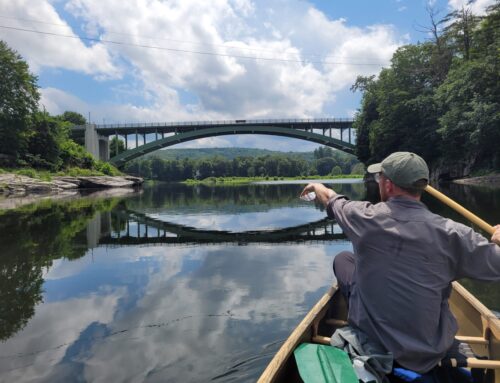In the wake of the nuclear disasters in Japan, Clearwater calls for Indian Point to be closed and decommissioned – not relicensed
Clearwater would like to offer our deepest sympathy to the people of Japan in this time of unspeakable tragedy and chaos. In the aftermath of a massive earthquake and devastating tsunami, the Japanese people now face a potential nightmare as they struggle to prevent meltdowns in their damaged nuclear reactors.
We sincerely hope the world will learn from this unthinkable disaster. As the aftermath of the massive quake continues to unfold, the debate about nuclear power has been reignited in America and around the world. We must never again allow nuclear power plants to be built on or near seismic fault lines, in earthquake zones, or in tsunami or hurricane-prone areas, anywhere on the globe.
In 2008, Columbia University’s Lamont-Doherty Earth Observatory published a report that stated that a “magnitude 6 or 7 earthquake … destined to originate from the Ramapo Fault Zone” was statistically overdue and would cause hundreds, or even thousands of fatalities and billions of dollars in damage. Located at the convergence of two fault lines, a recent US Nuclear Regulatory Commission (NRC) report revealed that, in fact, Indian Point reactor 3 has the highest risk of earthquake damage of the 104 active US nuclear plants.
However, also in 2008, the NRC rejected NY State’s Contention-14, which raised concern that the relicensing application for Indian Point was “incomplete and insufficiently analyzed” and failed to include an analysis of severe accident mitigation alternatives (SAMA) that could reduce the effects of an earthquake damaging IP-1 and its systems, structures and components that support IP-2 and IP-3.
Unfortunately, when it comes to nuclear power here in the Hudson Valley, and around the world, the deck has been stacked by regulations systematically tailored over time to favor the nuclear industry at the expense of public health and safety and environmental protection.
In addition to ignoring scientific evidence that this aging, leaking nuclear power plant was built within a mile of the Ramapo fault, the NRC has also ignored, rejected, or ruled “out of scope” the health impacts of the leaks and other discharges of radioactive isotopes into the air, ground, and water, despite numerous studies showing that people who live near nuclear plants have higher levels of radioactive isotopes in their bones, teeth and other tissues.
The population surrounding Indian Point has grown significantly since the 1960’s and 70’s when the Indian Point plants were built. Clearwater opposed the original siting at the time, and raised the issue again after 9-11. More than 20 million people live or work within the 50 miles of the “peak injury zone” around Indian Point. In 2003, Governor Pataki commissioned evacuation expert, James Lee Witt, to assess the possibility of evacuation from the 10-mile evacuation zone. When the Witt Report determined that the proposed evacuation wouldn’t work, the NRC and FEMA simply reduced the evacuation plan to a 2-mile wedge in the direction of the plume, and everyone else will be advised to “shelter in place.”
NRC staff has increasingly granted exemptions from the licensing design basis, a practice that is not authorized by either the Atomic Energy Act or Congress. In fact, this practice is in direct contradiction to the “Sholly Amendment,” which requires that any modification or change of the nuclear license be authorized through an amendment process involving public notice and an opportunity to request hearings. The NRC’s misuse of exemptions subverts this important requirement for transparency and has significantly reduced safety standards and required inspections.
For the past few years, Clearwater has been working with Riverkeeper and New York State in a legal case surrounding Entergy’s application to relicense Indian Point to operate for another 20 years, a facility that is reaching the end of the 40-year lifespan that it was designed for. With a track record of leaks, transformer explosions, clogged cooling water intake valves, and other serious problems, we believe that relicensing Indian Point is definitely a case of playing Russian roulette with the future of people in the Hudson Valley and beyond. Beyond costly legal battles, we need to convince Congress to tighten the loopholes in the relicensing process, prohibit the relicensing of plants located near active geological faults and to place a moratorium on building new ones.
The global experiment of using nuclear fuel to create steam to turn turbines has now proven disastrous. There are much cleaner, safer, readily available sources of energy. Our mandate must be to aggressively call for the long-overdue infrastructure to generate power cleanly, safely and from sustainable renewable sources.
Clearwater has unequivocally opposed nuclear energy for over 40 years; nuclear plants are unsafe, deadly, and costly. In the wake of the nuclear disasters in Japan, Clearwater calls for Indian Point to be closed and decommissioned – not relicensed.





